New Delhi: Top Lashkar-e-Taiba bomb expert Abdul Karim Tunda, one of the 20 terrorists India had asked Pakistan to hand over after the 26/11 Mumbai attack, was on Tuesday discharged by a Delhi court in a case lodged against him in 1994 under the stringent Terrorist and Disruptive Activities (Prevention) Act (TADA).
Additional Sessions Judge Neena Bansal Krishna discharged 73-year-old Tunda of the alleged offences under the provisions of TADA, Explosive Substance Act, the Arms Act and under section 120(B) (criminal conspiracy) of the IPC.
However, Tunda will have to remain in jail as there are several pending cases against him.
Special Cell of Delhi Police had filed a charge sheet against Tunda in the case in which five accused were arrested on January 17, 1994 and 150 kg explosives and six daggers were allegedly recovered from their possession.
The trial court in its judgement in December 1999 against the five accused– Abdul Haq, Aftab, Abdul Wahid, Afaq and Afran Ahmad– had convicted them under the provisions of Explosive Substance Act read with section 120(B) of the IPC.
The police, in its supplementary charge sheet against Tunda, had said that he was declared a proclaimed offender by the court earlier and he was involved in various terror cases in India.
Tunda was arrested by the Special Cell on August 16 2013 from the Indo-Nepal border.
During the arguments on charges, advocate M S Khan, appearing for Tunda, had argued that there was no evidence in the case and confessional statements of the other arrested accused in the case cannot be relied upon against his client.
Khan had also contended that there was no material to connect Tunda with the alleged recovery of the explosives.
Public Prosecutor Rajiv Mohan had argued that there was a disclosure statement of other co-accused who were convicted earlier in the case under provisions of Explosive Substances Act.
The Special Cell of Delhi Police had told the court that there was circumstantial evidence against Tunda as 40 kg explosives were recovered from the house of his brother in Delhi, where he was also residing, in 1994.
The police had said that other accused, who had faced trial in the case, had also given confessional statements that they had hatched the conspiracy for terror strikes here on instructions of Tunda.
Police had told the court that Tunda, suspected to be involved in 40 bombings in India, was declared a proclaimed offender in the case.
New Delhi: The partners in the ruling NDA combine are all on board on the land acquisition Bill and will vote in its favour in Lok Sabha after the government on Tuesday reached out to them in order to secure their support in this regard, sources said.
According to sources, Parliamentary Affairs Minister M Venkaiah Naidu at a meeting on Tuesday talked to leaders of all the NDA allies, who expressed solidarity with the government on the land Bill.
Naidu, the sources said, also talked to Shiv Sena chief Uddhav Thackeray and sought his cooperation in this regard. Thackeray told Naidu that his party would support the Bill and vote for it in Lok Sabha, the sources added.
Senior Akali Dal leader Prem Singh Chandumajra, meanwhile, told PTI, “Our party is on board and will support the Bill as the government has agreed to 90 per cent of our amendments. We will vote in favour of the Bill.”
Finance Minister Arun Jaitley along with Naidu and Rural Development Minister Birender Singh briefed the NDA allies on the Bill and the amendments to be moved by the government to address the concerns raised over it.
The crucial Right to Fair Compensation and Transparency in Land Acquisition, Rehabilitation and Resettlement (Amendment) Bill, 2015, which was moved for consideration and passage by Singh yesterday in Lok Sabha, will be put to voting later today in Lok Sabha.
The meeting of NDA leaders was attended by TDP’s Ashok Gajapathi Raju and YS Chowdhary, Anant Geete and Anil Desai of Shiv Sena, Ram Vilas Paswan and Chirag Paswan of LJP, Anupriya Patel of Apna Dal, Neiphiu Rio of Nagaland People’s Front, Raju Shetty of Swabhimani Paksha, Prem Das Rai of Sikkim Democratic Front and Harsimrat Kaur Badal of Akali Dal.
PTI
A handwritten list discovered in the bedroom of one of the three London schoolgirls feared to have fled to join Islamic State (Isis), seen by the Guardian, details the items they needed to buy as well as the travelling costs of getting to Syria.
The items ranged from a mobile phone to underwear, makeup and an epilator. Plane tickets to get them to Turkey are listed at just over £1,000, using the French word for ticket. The list appears to be in keeping with an Isis online guide for potential recruits.
Shamima Begum, 15, Kadiza Sultana, 16, and Amira Abase, 15, travelled from London to Turkey last month. The girls, all from the Bethnal Green Academy in east London, were lured by Isis propaganda and are believed to be on a pathway to become so called “jihadi brides”. Police were handed the list by the family of one of the girls, who went through her things immediately after she disappeared.
Family members will on Tuesday testify before the home affairs committee of MPs. They will be followed by Metropolitan police commissioner Sir Bernard Hogan-Howe, from whom they want an apology for his force’s handling of the case. Last week the girls’ families spoke out against the police for failing to pass on information about another girl from the same school who disappeared and was believed to have travelled to Syria, arguing that had they known they might have been able to prevent their daughters from following.
The planning and costings suggest the three schoolmates were having to be careful about making sure they had enough money for the trip. Their families told the Guardian in an interview last week they had no idea where their the girls had got the money from. A grand total is written on the list of 2,190, most likely to refer to pounds sterling.
The list is written on a page from a diary and planner, and the handwriting is by two different people. At first glance it would appear to be a list that teenagers would draw up for a camping trip. The items are listed, then the initials of the girl’s first name, showing either who was to purchase them or who they were for, and then the cost. An epilator at £50 is to be purchased, as are two sets of underwear for two girls for £12, socks for £4, a phone for £75.
The three, who had been described as good students, fled on 17 February while they were on a half-term break, taking a flight from Gatwick to Turkey, which borders Syria. A few days later they are believed to have crossed the border and entered land in Syria held by Isis.
Also on the list are makeup, boots and a bra. The bottom of the list, seemingly in different handwriting to the top, lists the logistics and costs to Turkey, and then across to the border with Syria. These sums include money for visas, a coach, a hotel for one or two nights, a taxi and SOME EXTRA CASH.
CCTV footage after the girls arrived in Istanbul in Turkey showed them waiting at Bayrampaşa bus station in a suburb of the city after their flight landed. It is believed they waited 18 hours at the bus station.
Turkish authorities have said that the UK did not inform them for three days after their disappearance, but the British say Istanbul was told promptly.
Some people in east London claimed to have seen some of the girls the Saturday before they left at the Westfield shopping centre in Stratford, but they did not see what they were buying.
On Saturday the Met issued a statement apparently rejecting the families’ key claim that they had not been told that a 15-year-old friend of the girls had gone to Syria weeks earlier. The Met said the families had been told in December 2014 by the deputy headteacher of the Bethnal Green Academy, which all the girls had attended. Hours later it retracted its statement, citing “further discussions with Bethnal Green Academy”.
The Met statement followed media interviews with the families on Friday. The families accused the force of covering up their errors since the girls went missing. Police wrote letters to the parents saying their children had been friends with the pupil who had gone abroad and asking for permission to take formal statements. But instead of delivering the letters directly to the parents, police handed them on 5 February to the girls themselves, who hid them in their school textbooks in their bedrooms. The families only found the letters after the girls left.
The Met statement did appear to show some contrition, stating: “With the benefit of hindsight, we acknowledge that the letters could have been delivered direct to the parents.”
Amul’s stick ice-cream will be available in most stores in the city; Mother Dairy will be more selective in its approach.
After an eventful entry into Delhi last month, Gujarat Co-operative Milk Marketing Federation (GCMMF), the owners of Amul, one of the country’s best-loved food brands, will launch its premium stick ice-cream, Epic, in the city this week.
The Mumbai leg will be Epic’s second city-specific launch, after it created a stir in Delhi last month by launching the product a day ahead of Magnum, rival Hindustan Unilever’s stick ice-cream, which was slated for rollout on February 18 in the capital.
R S Sodhi, managing director of GCMMF, confirmed the Mumbai launch and said the product would be taken to Bengaluru, Kolkata and Chennai after that.
Meanwhile, rival Mother Dairy, which quietly rolled out its high-end stick ice-cream, called Belgiyum, in Delhi around the same time that Epic and Magnum were launched in the capital, will take it to five more metros, says Subhashis Basu, head of dairy products. “The metros include Mumbai, Bengaluru, Chennai, Kolkata and Hyderabad and it will happen in the next one month,” he says.
Mini-metros such as Pune and Ahmedabad are also on Mother Dairy’s radar but a launch there is expected a little later, he says.
Both Epic and Belgiyum compete head-on with Magnum, and are made of Belgian chocolate like the latter. However, Epic has been priced at less than half of Magnum at Rs 35-40 a stick. Belgiyum is available for Rs 80 a stick and Magnum for Rs 90 a stick.
Sodhi says GCMMF will also continue with its Creme Rich brand of Belgian ice-creams in cups and tubs, launched last summer. “While Creme Rich did help us make inroads into the premium ice-cream market, we needed something strong to compete with the likes of Magnum, which is why Epic. Our price points are competitive because we are not importing Epic (HUL imports Magnum into India). This allows us to keep our costs low,” he says.
The move to fortify its premium ice-cream portfolio comes as Amul is looking to trade up as consumer preferences change. It has 40-41 per cent share of the Rs 2,000-crore organised ice-cream market and has achieved this largely on the back of mass-market products, typically priced at a discount to rivals. Amul has always defended this pricing strategy, saying its co-operative model allows it to economically source raw materials, especially milk, , permitting it to pass on these savings to consumers. The strategy has been no different in other dairy categories such as fresh and flavoured yoghurts, milk-based beverages where it operates.
The premium ice-cream market, in particular, has been expanding on the back of growing disposable incomes and consumers’ desire to try out better products, says Basu of Mother Dairy.
Pegged at Rs 250-300 crore within the overall ice-cream market, the premium segment has in the past few years seen the entry of international brands such as Häagen Dazs, CocoBerry and London Dairy.
While Epic will be available in most stores in Mumbai, Belgiyum will be retailed at select outlets to ensure its premium profile and imagery stays, Basu says. GCMMF is expected to begin marketing activities around Epic in the next few weeks to increase hype as summer sets in. Magnum and Belgiyum could also get its share of voice in the summer, experts tracking the market say.
The Indian government is up in arms. It has banned a documentary, India’s Daughter, which includes a reconstruction of the notorious gang rape and murder of a young woman on a bus in Delhi. Ministers can’t stop Leslee Udwin’s film being shown elsewhere – you might have seen it on BBC Four last week – but they would like it to be consigned to oblivion. It reflects badly on India, you see.
The rape of the 23-year-old student took place just before Christmas 2012, bringing thousands of people on to the streets to demand greater protection for women. All of this happened before the current prime minister, Narendra Modi, took office, but he would like the entire subject to just go away. Last month, his government shelved a plan drawn up after the Delhi gang rape to set up 660 rape crisis centres across India; the figure has been slashed to 36 because the Prime Minister believes that the Indian police are “sensitive enough” to deal with rape cases. His confidence in the authorities isn’t universally shared, leading to a dreadful incident in north-east India last month when a suspected rapist was dragged from jail and lynched.
According to some estimates, a rape takes place in India every 20 minutes. The documentary explains why the figure is so high: the quiet dignity of the victim’s parents contrasts with the chilly detachment of Mukesh Singh, who drove the bus and shows not a shred of remorse for the sexual torture and murder of their daughter. The Minister for Parliamentary Affairs believes that the film is an “international conspiracy to defame India”, but what it really does is expose the profoundly misogynist culture that creates men such as Singh. The fact that ministers are more concerned about the country’s reputation than the safety of half the population does the same.
READ MORE: DELHI BUS RAPIST BLAMES DEAD VICTIM FOR ATTACK
INDIA TO INVESTIGATE TV CREW’S INTERVIEW WITH RAPIST
HOW INDIA ATTEMPTED TO SUPPRESS THE BBC DELHI GANG-RAPE DOCUMENTARY
“Honour” is at the heart of this problem, whether it’s that of a country or an individual woman. According to the driver, the student shouldn’t have been out at night with a male friend; once the rape started, she shouldn’t have struggled with her attackers. “A girl is far more responsible for rape than a boy,” he declares in the film. One of the defence lawyers backs him up, making the astounding claim that he would burn his own daughter alive if she “disgraced herself” by going out at night. (The victim, by the way, was returning from an early-evening showing of The Life of Pi when she was targeted.)
India is not the only country with a rape problem. In South Africa, some estimates have suggested that there could be half a million rapes each year, many of them by multiple perpetrators and characterised by extreme violence. In Mexico, rates of rape and murder involving female victims are so high that they have been officially described by the UN as a “femicide”. Similar attitudes can be found in all these countries, proposing that it’s up to women to modify their behaviour if they want to avoid being attacked. When Singh claims in the film that a “decent” girl wouldn’t be out at nine o’clock at night, it brings to mind the Grand Mufti of Australia, who, in 2006, compared women to a plate of uncovered meat. If they would only stay indoors, he argued, nothing bad would happen to them.
It’s easy to dismiss such views as pre-modern, a relic from a period of history before gender equality emerged as one of the most basic rights. Feminists and human rights activists have challenged them in country after country, including India, where the Delhi bus attack is one of a series of gang rapes that are almost too awful to read about. But the reality is that rape culture – an outdated set of ideas about how women should behave – exists everywhere in the world. An integral feature is the habit of disbelieving victims or dismissing their experience as not “real” rape.
Only last week, a serious case review was published into the sexual abuse of hundreds of girls in Oxfordshire. It’s clear that the perpetrators, who were from a predominantly Asian background, thought they could do what they liked because no one would listen to their victims. They were right: the authorities repeatedly failed to recognise that they were dealing with serial rape, falling back on the ludicrous notion that girls of 12 or 13 were making “lifestyle choices” when they had sex with men twice their age. Almost exactly the same thing happened in Rotherham, where at least 1,400 girls were abused.
Then there’s the Ched Evans case. The footballer has been convicted of rape by a jury and hasn’t even finished serving his sentence. (He was released from prison last year after serving half of his five-year tariff and remains on licence.) None of this has discouraged a vile campaign by some of his supporters, who have broken the law by identifying the victim and vilifying her on social media. It’s a classic piece of victim-blaming: she was drunk, she went back to his mate’s HOTEL ROOM, what did she expect?
GUWAHATI: -The Nagaland government had failed to appreciate the gravity of last week’s protests in Dimapur, which ended with a mob breaking into a prison, dragging out a rape accused and lynching him, sources in the Union home ministry told NDTV. So far, 42 people have been arrested in the case.
The state police had given permission for the protests to Naga Students’ Federation, NGOs and associated front organisations on Thursday. But the state government asked for additional forces only when the situation had gone out of hand, sources said. The request came in at 3 pm, but within half-an-hour, Syed Sarif Uddin Khan was dead.
In its report to the home ministry, the state government said a large crowd had started moving towards the jail at 1 pm. But though reinforcements were rushed, the police were unable to open fire due to the presence of minors in the crowd.
Curfew, lifted for this morning after three days, has been imposed again in the city. Internet services – which were blocked after videos of the lynching were found to have been widely shared on the web – will be in place till at least 6 pm tomorrow. Phone text message services, which were stopped at the same time, have been resumed
There has been tension in the city after it was rumoured that Khan was an illegal immigrant from Bangladesh. That has been proved wrong. Khan’s brothers are in the Indian Army and his father was in the Air Force.
There are also question marks over the rape case filed against him. The police said the report of the medical test of the woman is still awaited.
The issue found echo in Parliament today, with Congress members from Assam calling the matter a failure of the Nagaland government. Gaurav Gogoi of Congress said the Central forces deployed at the jail failed to protect the accused.
Shiv Sena, an ally of the NDA, said the mob fury reflects people’s anger towards sexual crimes against women. An editorial in Sena mouthpiece Saamna said it would be a mockery to term the incident as a law and order failure, since, the government “does not think of the deteriorating law and order situation when women are raped, but thinks about it when a rape accused in punished in public”.
On Thursday, thousands broke into the Dimapur Central Jail, dragged out Khan, stripped him, beat him up, tied him to a motorcycle and dragged him for 7 km. He died on the way. The mob then hung his body at a roadside roundabout.
Widespread protests took place across Nagaland since, and at Mr Khan’s hometown Karimganj in neighbouring Assam, where his funeral was held on Sunday. Over 10,000 people attended the funeral.
Twenty people were arrested for the crime this morning, taking the total number of arrests to 42. But Khan’s brother Jamal Khan has alleged that most of his killers are still roaming free.
ihadi” is in fact an Australian teenager who converted to Islam, a report said Monday.
A photo of the meek-looking youth, holding a rifle and sitting in between two jihadists with a black IS flag in the background, emerged on Twitter in late December.
At the time the militant group, which has run rampant through swathes of Iraq and Syria, hailed his recruitment as “a major coup” with the British media dubbing him “Britain`s white jihadi”.
Doubts about the authenticity of the picture subsequently emerged after a blogger claimed he had fabricated the image to hoax the British press.
But Australia`s Fairfax Media said the photograph had now been positively identified by friends of the teenager and members of two mosques in Melbourne.
It identified him as a former high-achieving 18-year-old student called Jake, declining to reveal his full name at the request of a family member.
He was described as a maths whiz who attended the Craigieburn Secondary College in Melbourne but dropped out in the middle of last year after converting to Islam and buying a one-way ticket to Istanbul en route to Iraq and Syria.
His identification came after Australia stopped two teenage brothers at Sydney airport believed to be heading to the Middle East to fight, amid growing concern in Western countries over young people joining jihadist groups.
That case followed three British schoolgirls leaving their London homes to join IS in Syria in February.
“He used to come here when we had a big lecture,” Abu Zaid, a committee member of the Hume Islamic Youth Centre in Coolaroo, told Fairfax Media of Jake.
“He was a very quiet guy, he stuck to himself. We weren`t close to him. I didn`t see any of the people (getting) close to him.”
The newspaper said the youth now goes by the Islamic names Abdur Raheem or Abu Abdullah.
It said that two months after his disappearance, he contacted his family to tell them he was in Iraq training for a “martyrdom mission” with a suicide vest.
He later called again to say he was “too scared to do it and he prefers being a soldier” and was planning to travel to Syria.
Around 140 Australians have travelled to fight with IS and other terrorist groups in Syria and Iraq, with another 150 supporting them at home, the government has said.
Prime Minister Tony Abbott said indoctrination was happening in unexpected places and that the government was dealing with the issue.
“Too many Australians, it seems, are being brainwashed online by this death cult,” he said, referring to IS.
“Very importantly, we are about to begin a very big campaign to try to counter the influence that the death cult has, particularly online on vulnerable Australians.”
Abbott did not provide further details, but last month flagged changes to immigration laws to allow the government to revoke or suspend Australian citizenship for dual nationals implicated in terrorism.
There are also plans for returning foreign fighters to be prosecuted or monitored under control orders, while Canberra has pledged a crackdown on organisations that incite religious or racial hatred.
AFP
KATHMANDU, 6 Mar 2015: Nepal’s only international airport will remain closed at least till 10 am on Saturday even as the Indian rescue mission tried to remove the Turkish jet that skidded off the surface on Wednesday morning, blocking the runway and stranding thousands of passengers.
The Tribhuvan International Airport (TIA) has extended the shutdown of international flight operations till tomorrow, Ratish Chandra Lal Suman, Director General at Civil Aviation Authority of Nepal (CAAN) said.
“Flight operations won’t resume until 10 am on Saturday as the efforts to move the plane from the current position is in progress and like to take more time,” he added.
Indian Air Force on Thursday sent 11 technical experts and a C-130J Super Hercules transport plane with an aircraft removal kit following requests by the Nepalese government to remove the Turkish Airliner Airbus A-330, for resumption of international flights in and out of the country’s capital.
The Indian technical team has lifted the front portion of Turkish Airliner with the help of lifting airbag, TIA Chief Birendra Prasad Shrestha said, adding, all front wheels of the plane will be changed on Friday.
The grassy land in between the runways broken up by the aircraft has been smoothened with gravel and sand, Shrestha was quoted as saying by Ekantipur.
The Indian team of technicians is expected to complete the clearance work by tomorrow morning, he added.
Nepal’s only international airport had remained shut since Wednesday morning when the Turkish Airliner – with 224 passengers and 11 crew members onboard – skidded off the runway and part of the wing of the plane fell on the runway, blocking movement of other aircraft.
All the passengers were unhurt, but there was some damage to the front of the Airbus 330.
Thousands of passengers and tourists remained stranded at the TIA as flights were cancelled for the third consecutive day, affecting the upcoming tourist season, one of the main source of forex for the Himalayan nation.
Nepal’s high altitude and tricky runways that often suffer from foggy conditions and poor visibility pose a challenge to even the most accomplished of pilots and had been blamed for a string of aircraft crashes in the past.
The European Union had banned all Nepal-based airlines in December 2013 from flying to the 28-nation bloc, citing poor safety standards followed by the airlines in Nepal. PTI [Pic from www.bbc.co.uk]
‘Nepal’s airport to remain closed till today
KATHMANDU, 6 Mar 2015: Nepal’s only international airport will remain closed at least till 10 am on Saturday even as the Indian rescue mission tried to remove the Turkish jet that skidded off the surface on Wednesday morning, blocking the runway and stranding thousands of passengers.
The Tribhuvan International Airport (TIA) has extended the shutdown of international flight operations till tomorrow, Ratish Chandra Lal Suman, Director General at Civil Aviation Authority of Nepal (CAAN) said.
“Flight operations won’t resume until 10 am on Saturday as the efforts to move the plane from the current position is in progress and like to take more time,” he added.
Indian Air Force on Thursday sent 11 technical experts and a C-130J Super Hercules transport plane with an aircraft removal kit following requests by the Nepalese government to remove the Turkish Airliner Airbus A-330, for resumption of international flights in and out of the country’s capital.
The Indian technical team has lifted the front portion of Turkish Airliner with the help of lifting airbag, TIA Chief Birendra Prasad Shrestha said, adding, all front wheels of the plane will be changed on Friday.
The grassy land in between the runways broken up by the aircraft has been smoothened with gravel and sand, Shrestha was quoted as saying by Ekantipur.
The Indian team of technicians is expected to complete the clearance work by tomorrow morning, he added.
Nepal’s only international airport had remained shut since Wednesday morning when the Turkish Airliner – with 224 passengers and 11 crew members onboard – skidded off the runway and part of the wing of the plane fell on the runway, blocking movement of other aircraft.
All the passengers were unhurt, but there was some damage to the front of the Airbus 330.
Thousands of passengers and tourists remained stranded at the TIA as flights were cancelled for the third consecutive day, affecting the upcoming tourist season, one of the main source of forex for the Himalayan nation.
Nepal’s high altitude and tricky runways that often suffer from foggy conditions and poor visibility pose a challenge to even the most accomplished of pilots and had been blamed for a string of aircraft crashes in the past.
The European Union had banned all Nepal-based airlines in December 2013 from flying to the 28-nation bloc, citing poor safety standards followed by the airlines in Nepal.
US actor Harrison Ford has been injured in a small plane crash in Los Angeles.
The 72-year-old star of the Indiana Jones and Star Wars films reported engine failure and crash-landed his vintage plane on a Venice golf course.
He was breathing and alert when medics arrived and took him to hospital in a “fair to moderate” condition, a fire department spokesman said.
His son Ben, a chef in Los Angeles, later tweeted from the hospital: “Dad is OK. Battered but OK!
His publicist said: “The injuries sustained are not life threatening, and he is expected to make a full recovery,”
The nature of Ford’s injuries have not been disclosed but website TMZ, which first reported the story, said he suffered “multiple gashes to his head”.
Shortly after take-off from Santa Monica Airport, he said he was having engine failure with his 1942 Ryan Aeronautical ST3KR and was making an “immediate return”.
He was unable to reach the runway and landed on the Penmar Golf Course, where onlookers pulled him from the plane fearing it could explode.
line
Aerial catastrophes averted
A drone nearly struck a plane as it landed at London’s Heathrow Airport last year
Three planes carrying about 200 people came close to colliding in 2012 at Washington’s Reagan National Airport
In the “miracle of Hudson” of 2009, a pilot had to ditch into New York’s Hudson river after both engines failed. All 155 passengers and crew were saved
Two Japan Airlines jets with almost 700 people on board came within 10m (10 yards) of colliding in 2001, because of air traffic control confusion
The cargo door on a plane leaving Miami airport blew off during takeoff in 1989, but it was able to return safely
A hole blew open in the fuselage of a jet in Hawaii in 1988. A stewardess was sucked out of the plane but it landed safely, with passengers escaping with injuries
line
Officials said the plane had been flying at about 3,000 feet (900m) and hit a tree on the way down.
“It just sounded like a car hitting the ground or a tree or something,” Jeff Kuprycz, who was playing golf told the Associated Press news agency. “He ended up crashing around the eighth hole.”
Christian Fry of the Santa Monica Airport Association said it was “an absolutely beautifully executed emergency landing by an unbelievably well-trained pilot”.
Film producer Ryan Kavanaugh, who also witnessed the accident from his office, told The Hollywood Reporter: “He literally had five seconds, and 99% of pilots would have turned around to go back to the runway and would have crashed.”
“Harrison did what the best pilots in the world would do,” he continued. “He made the correct turn that the plane was designed for with an engine out.”
‘Moderate trauma’
After crash-landing, Ford was initially treated by doctors who happened to be at the golf course.
Later this year, Ford is reprising his role of Han Solo in the latest addition to the Star Wars franchise, Star Wars: The Force Awakens.
He broke his leg in June last year on set at Pinewood Studios while filming a scene involving a door on the Millennium Falcon spaceship.
Ford took up flying when he was in his 50s and is also trained to fly helicopters.
In 1999, Ford crash-landed his helicopter during a training flight in Los Angeles but both he and the instructor were unhurt.
A year later a plane he was flying had to make an emergency landing in Nebraska. Again he and his passenger escaped unhurt.
It says the film portrays courage, sensitivity
The Editors Guild of India on Friday urged the government to revoke the ban on the film India’s Daughter to enable people to view “what is a positive and powerful documentary touching on the freedom, dignity and safety” of women.
The documentary was aired on BBC’s Channel 4 on Thursday evening and has been available online since then despite the government securing a court injunction on its screening across media platforms in the country.
In a statement, the Guild found no merit in the government claiming that the film could not be shown because the subject of the documentary — the Nirbhaya gang rape that shook India in the winter of 2012 — is sub judice. “To raise the issue of sub judice now at the stage of final appeal in the Supreme Court and seek to still discussion is absurd. Judges, particularly those in the Supreme Court, are by training and temperament immune to the happenings in the public sphere outside the court, and it is an insult to the Supreme Court to suggest that the airing of the convict’s perverted views would tend to interfere with the course of justice,” the Guild said.
Describing the ban as “wholly unwarranted” and based on a misunderstanding of the power and message behind the documentary, the Guild noted that the film portrays the courage, sensitivity and liberal outlook of a family traumatised by the brutality inflicted on the daughter, the continuing shameful attitudes towards women among the convict and the educated, including lawyers, besides multiple voices in support of women’s freedom and dignity.
Pointing out that the Supreme Court itself has advocated “the broadest freedom to express even the most unacceptable of views,” the Guild said the message that emerged from the documentary was such that it would make people re-examine their own attitudes and the attitudes of people around them.
The Guild’s statement also takes note of the fact that the government seems to have taken the proscription route on the basis of initial expressions of outrage — including by members of Parliament — and without viewing the film in its entirety. “The rationale that the ban was in the interests of justice and public order as the film ‘created a situation of tension and fear amongst women’ and as that the convict would use the media to further his case in the appeal that was sub judice seems to be an afterthought.”

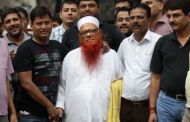



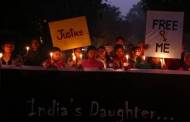
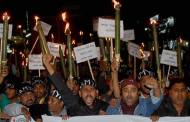
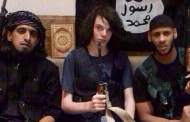
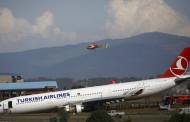
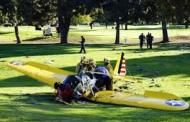
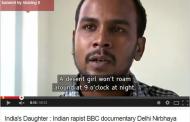





Recent Comments